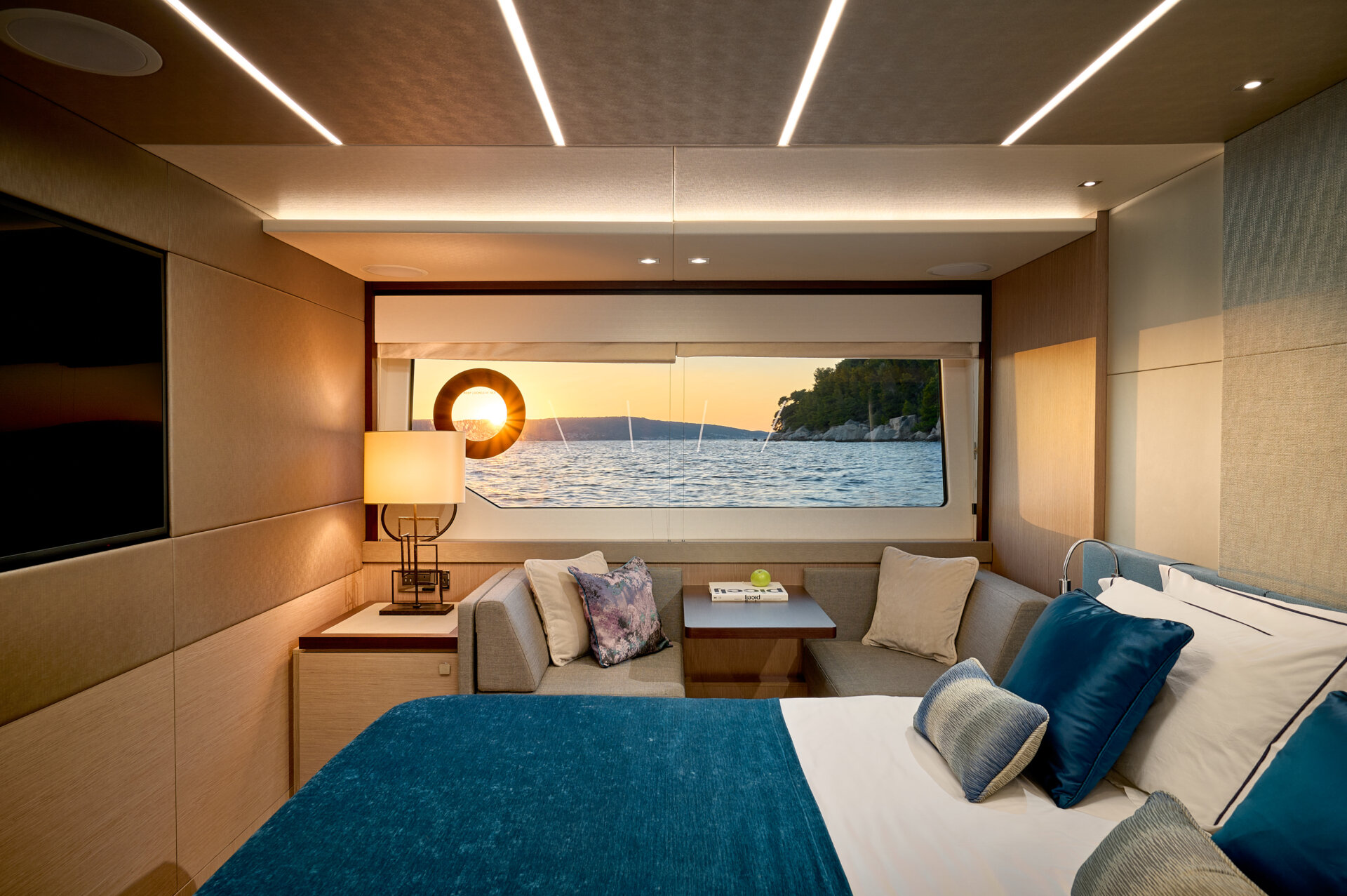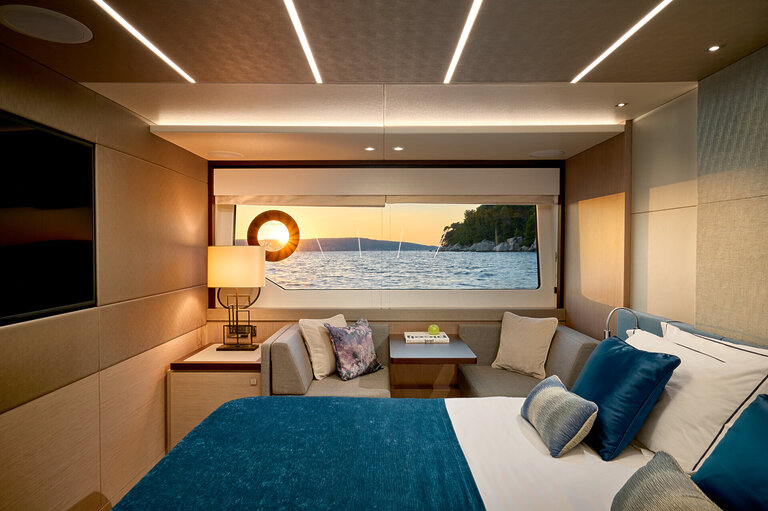

The world of yacht chartering can seem intimidating for first timers. We are often met with clients who are surprised by the cost of a yacht charter; some expecting it to be more and others less. To help you understand what is involved financially, we have put together a summary of the cost of chartering and a breakdown of the factors involved.
The price of a yacht charter can vary significantly based on the following factors:
One of the main factors is the type of yacht charter. There are three types of charters available: crewed, skippered or bareboat. Crewed charters are becoming the most popular type of charter, as they are luxurious and fully catered for experiences. Those yachts come with professional crews, including a chef. At the other end of the spectrum are bareboat charters. Bareboat charters are for sailors who have the right sailing licence for the area they are chartering in. When chartering a bareboat you are paying just for the boat (and some additional extras). Those boats are smaller and generally more simple, with less equipment. You would look after the boat for the charter period, your itinerary, provisions, cooking and cleaning.
The make of yacht also impacts the price of the charter. In general, motor yachts are more expensive than sailing yachts and their fuel costs are far greater. The larger the yacht, the more spacious and therefore the more expensive it is. However, one can reduce costs per person on larger boats by ensuring the maximum guest numbers are filled (this is particularly interesting for a group of friends or two families sharing).
For example, Croatian sailing yacht SAM LIMI costs €49,500 for a weekly charter in High Season. This yacht can accommodate a total of 8 guests. The cost per person is €6,187.50 if all 8 spaces are taken, opposed to say only 4 guests coming on the charter costing €12,375 per person. It makes financial sense to maximise the number of friends and family you take on board. On the other hand, if space is the primary consideration for the charter, San Limi is a particularly interesting choice as, with a length of 34m and four guest cabins, it has plenty of living space in the salon and on the decks.
Finally, just like a car, the newer the boat the higher the price. Take two, five cabin catamarans in Croatia. ADRIATIC TIGER and OPAL are both Lagoon 620 catamarans with the same number of crew and the same layout. However, Adriatic Tiger is one year younger than Opal and so it costs €1,700 more to charter. This general rule doesn’t always work though, as many older boats may be extensively refitted and actually be a higher spec than newer boats. When sending an offer, we set all this out clearly, so you can make an informed choice.
Once you have decided on what type of charter best suits you, the second largest impact on the price is the time of year you wish to go. In most destinations, there are 3 seasons: High, Mid and Low Season (In destinations such as the Caribbean, there are only two seasons: High and Low). The High Season is the most sought after (due to the school holidays and due to this time period having the best weather) and therefore the most expensive. For example, the weekly charter rate for catamaran MALA in the High Season is 68% more than the Low Season rate.
Finding the right boat is essential for the perfect yacht charter and with there being such a large number to choose from, working with a yacht broker ensures you find the right one for you and for your budget.
There are two types of charter pricings: ‘All Inclusive’ and ‘Plus Expenses’. In the Caribbean, typically, most of the crewed yacht charters are ‘All Inclusive’ and in French Polynesia too. On the Mediterranean, prices are typically ‘Plus Expenses’. For boats listed as ‘Plus Expenses’ the rate is for the boat, but you will also be expected to pay APA (Advance Provisioning Allowance). APA is an estimate for the costs such as: food and drinks provisioning, mooring, anchoring fees, fuel and possibly other costs for services booked while on board. A suggested APA tends to be between 10% and 40% of the charter price. The APA funds are given to the captain prior to the start of the charter to purchase provisions, fuel and other supplies. The Captain will keep all the receipts and a list of expenses from the APA so the charterer can review the running total. At the end of the charter the report will be given to the lead guest. Any APA not used will be refunded to the charterer and any additional funds required will be requested prior to disembarkation. (Typically, if the APA starts running low, the guests are informed in advance.)
As for ‘All Inclusive’ charters, they include all services, food and standard bar, all water sport activities, taxes and cruising licence fees. Additional extras for those charters would be: specific alcoholic beverages, land transfers, delivery fees and crew gratuity.
Whether VAT is applicable and included or not, depends on the location of the yacht. Generally speaking, VAT is not applicable in most of the Caribbean and is an additional cost in the Mediterranean. The amount of VAT will vary between the countries and is subject to a change. The exact amount of VAT applicable for your charter will be given at the time of enquiry. Examples of the current VAT percentages on the Mediterranean: 9% or 12% in Greece, 13% in Croatia, 22% in Italy, 18% in Turkey.
The Crew gratuity is at the client’s discretion, but it is customary and expected. The crews on board yachts (of any size) work very hard to ensure that every detail is thought of, looked after and that all guests have an unforgettable charter; they are highly appreciative of these tips. When thinking about how much to give, the general rule is that 10%-15% of the basic charter rate is the industry standard on the Mediterranean and in the Caribbean it is 15%-20% of the charter rate. On ‘All Inclusive’ charters this percentage is calculated on just the charter fee and not on extras such as taxes and delivery fee. If you are unsure about how much to give, then speak with us. Your Crew Gratuity can be paid either in cash or possibly via bank transfer (with prior agreement and arrangement).
With some of the charter rates, you may see the term: Delivery Fee, used as an additional cost. This is the fee for repositioning the yacht (at the client’s request) to a new area that is more ideal for the charterer to embark from or disembark at. The fee is calculated depending on the distance and amount of fuel required. The exact amount will be confirmed once the desired ports are chosen.